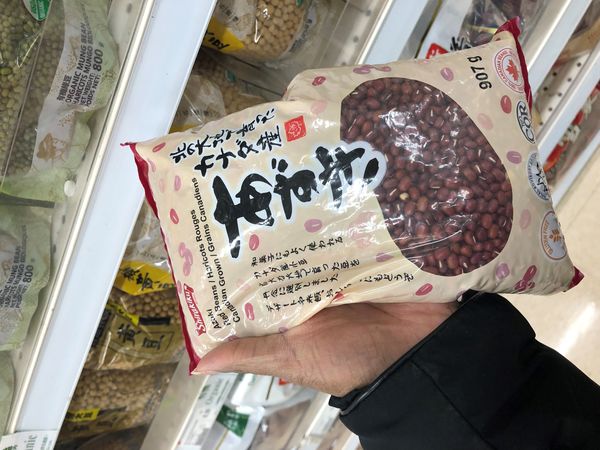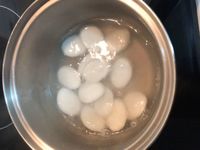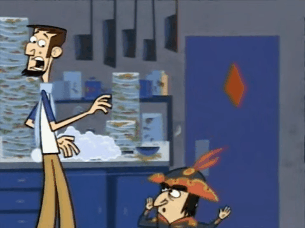七転び八起き ("Fall down seven, get up eight")
By Sifton Tracey Anipare
Hey there, Open Book reader! Let me start off by saying how honoured I am that you stopped by at any or all points in time this month. It’s been a blast delving into all my weirdness, and I’m so grateful to the good people at Open Book for giving me a place to delve. I got you all a present to show my thanks!
…so here’s where I would have posted a picture of your gift, but I accidently ate it before remembering to do that. Sorry. If it makes you feel any better, I saved the recipe for you. Of course, if you’re super eager, you can just watch the magic happen here. Don’t be fooled by the video or my experience with this recipe. Francis is a really good teacher. Hopefully one day I’ll do him proud.
For my last post, I’m going to talk about my recent adventure with zenzai. If you’ve read Yume, you’ll be familiar with the protagonist’s love of this sweet, soul-warming, red bean-based delicacy that hugs you from the inside. I first tried it at a mochi-making party one January in Japan, when a friendly co-worker handed me a bowl and asked me to try it. In the time it took for her to warn me that “not many foreigners like red bean,” my bowl was empty.
(MFW I burned my 猫舌 (“cat tongue”) on the first sip. No regrets, though.
On the JET Programme, I could count the number of non-Japanese teachers I knew who didn’t despite red bean (or anko, specifically) with the fiery passion of a trillion suns on one hand. But me, I LOVE it. I first tried it here in Toronto in the form of ohagi, a ball of sticky rice covered in sweet red bean paste (and my next possible feat in the kitchen, now that I have this giant bag of adzuki that must serve a purpose). Every time I treated myself to something at my fast-favourite restaurant, Tokyo Grill, I bought whatever ohagi they had – usually one or two. Once in a blue moon, they’d have three. That’s how fast they went. It was a tragic moment when I went back one day and saw the word ohagi covered in white-out tape on their menu – but at the time it was fine because I was like, “oh well, when I go to Japan, I can buy ohagi whenever I want!”
(Spoiler alert: that’s precisely what I did.)
Your CanLit News
Subscribe to Open Book’s newsletter to get local book events, literary content, writing tips, and more in your inbox
Then I discovered zenzai and looked forward to it every winter. It’s one of those things I’ve missed terribly since coming back to Canada, putting it out of my mind when I was finishing Yume as best as I could since I a) didn’t know where to find it, and b) was repulsed by the idea of making it on my own, knowing full well it “wouldn’t be the same.”
But this month, after lots of reminiscing for better times, I found myself at a T&T, holding this thing and refusing to put it down.
Shortly thereafter I am in my kitchen, donning my Care Bears battle apron, brimming with self-confidence (but also a tinge of fear because I knew exactly what was coming).
Truth be told I’ve been a big fan of the Cooking with Dog channel for years, so I already knew where to get a recipe. I assembled my ingredients, put on some lo-fi, and got down to business. It was so exciting – I was finally going to indulge in my favourite wintry dessert and feel like a capable grown-up at the same time. Couldn’t have asked for more!
Then halfway through I realized this recipe is actually for two different dishes instead of one. Now, instead of the humble beginnings of a warm, nummy soup, I am staring at a giant pot filled with (what appeared to be) quadruple the beans and a few tablespoons of hot bean water.
A few seconds later I saw that I’d killed my mochi. ಠ益ಠ I was so done.
I know they’re supposed to be in spherical form. I KNOW. ಠ___ಠ All they had were slices and it had already been a long day, so by Odin's beard this zenzai was happening.
For me, cooking and/or baking and the process of writing are so similar it’s not funny. I go through the same emotions either way: I come up with an idea and think, “ooh, I should create that!” Then I spend lots of time and effort gathering all the ingredients, measuring everything out carefully so I can get it right first and put off the creative experimentation until later. Then, somewhere around the first-third or halfway mark, I realize I’ve made a horrible (at least in my mind?) mistake, and by trying to fix it I’m probably making it worse. Then someone will look over my shoulder and go “WHAT are you doing?! Are you supposed to do that? Does the recipe say you should do that? Is it supposed to look like that?” and I have to answer a whole ton of questions, feeling stupider and inepter with each passing moment. Then, after trying to correct said mistake or at the very least assert myself and state my belief in what I’m doing, people shrug and give up trying to convince me how wrong and/or weird I am. Then I spend a good chunk of time wondering why I even bothered making any attempt to do what I’m doing, failure that I am, and debate how best to dispose of it all and pretend none of it ever happened.
But then I get so hungry (for the food or the story idea) I figure, “ugh, FINE. Power through it. You’ve come this far. Besides, no one is going to consume this mistake except you.”
(Probably the most disgusting but most relatable moment of Clone High for me)
In the end, after hours of panicking, fighting back tears and listening to motivational video game OSTs, I tasted my zenzai and oh my gosh - this stuff is FIRE. I don’t care how long it’ll take to finish, it’s already not long enough! Okay, that might be a slight exaggeration, because I know it’s not perfect…which I take responsibility for because I reduced the sugar (100g was a LOT, so nyah :P) …but it’s still ten times better than what I was expecting, so that in itself is a freaking achievement. ಥ◡ಥ
The best part is, this whole ordeal serves as a perfect metaphor for what went through my mind writing Yume, and whenever I write in general. Sure, maybe the end products aren’t perfect, and they may need more tweaking, or more time to "simmer," but at the end of the day I’m pretty proud of the result, and for making the attempt in the first place. I mean, how will you improve if you never even try, right? It's not important how many times you fell; the important thing is you always got back up.
But wait. Here comes the sad part: I ladled out a bowl, plated it beautifully, then hoovered it all before capturing that glorious final result on camera. Whomp whomp. I’ll get around to posting it somewhere, at some point…whenever I get over my zenzai drought long enough to re-take the photo before eating it all. (Seriously, I keep trying and I’m sorry. Third time’s a charm…or fourth, or seventh?)
If it helps, it kinda looked like this, but…prettier?
Anyhoo, thanks again, Open Book reader! It’s been ages since I’ve had the motivation to blog, and I hope to continue this progress on my WordPress as best as I can. (Give me until March Break though, there’s so much going around here. ^__^”) I have Twitter and Instagram too, but the former is mostly retweeting 90-Day Fiancé and my Wordle scores, and the latter is mostly food pics. But hey, now you know where to look for that impending zenzai pic. Until then, take care, keep warm, stay safe, and sweet dreams! ( ^◡^)っ ♡
The views expressed in the Writer-in-Residence blogs are those held by the authors and do not necessarily reflect the views of Open Book.
Sifton Tracey Anipare is a Ghanaian Canadian writer who lived and taught in Japan for four years. She loves video games, bubble tea, and Japanese coffee mixes, and is an avid collector of stickers and stamps. Yume is her first novel.












